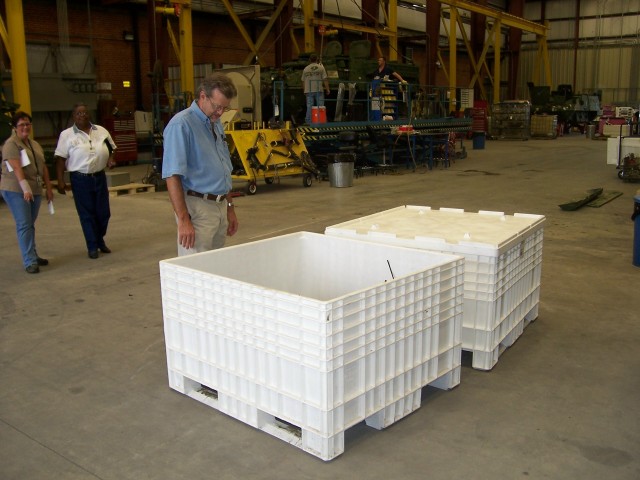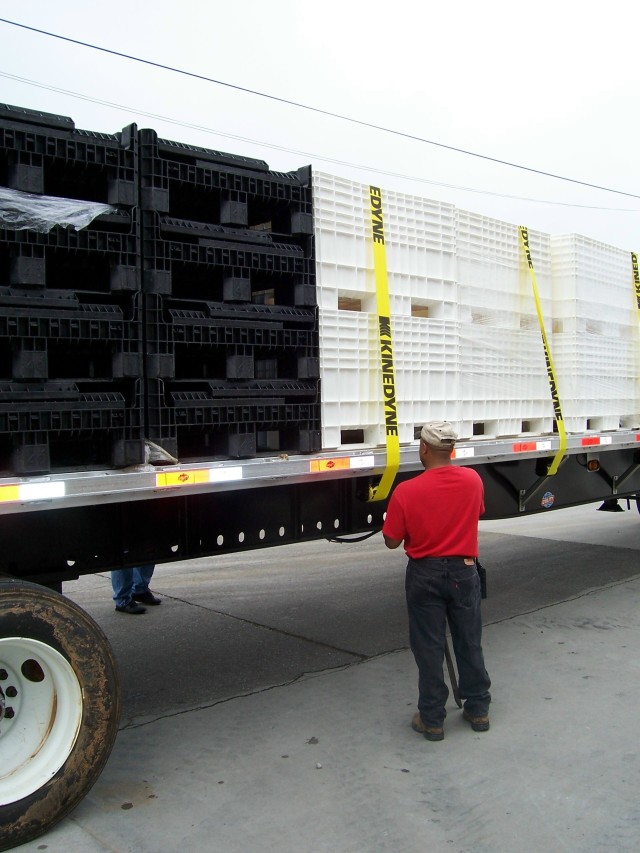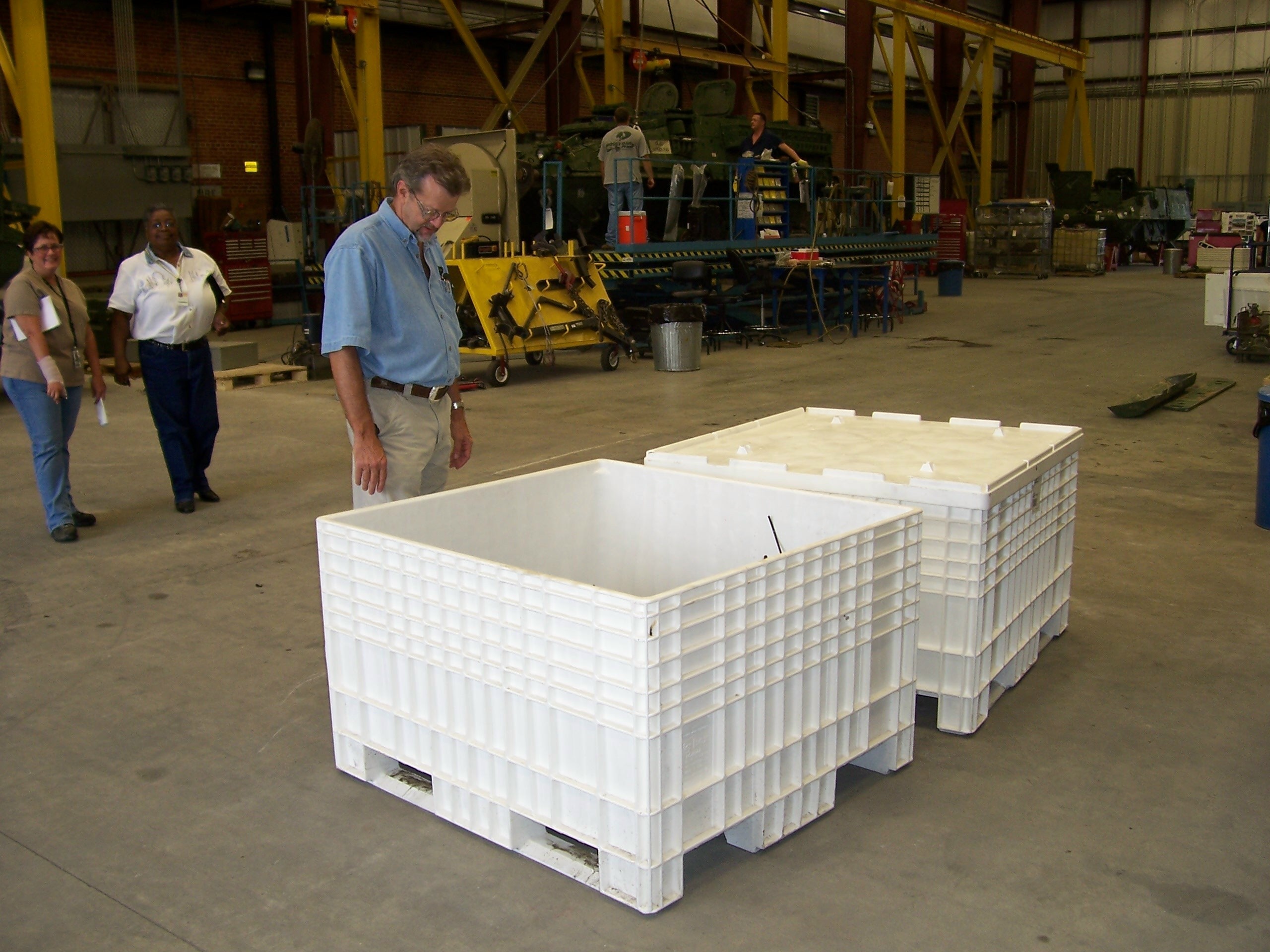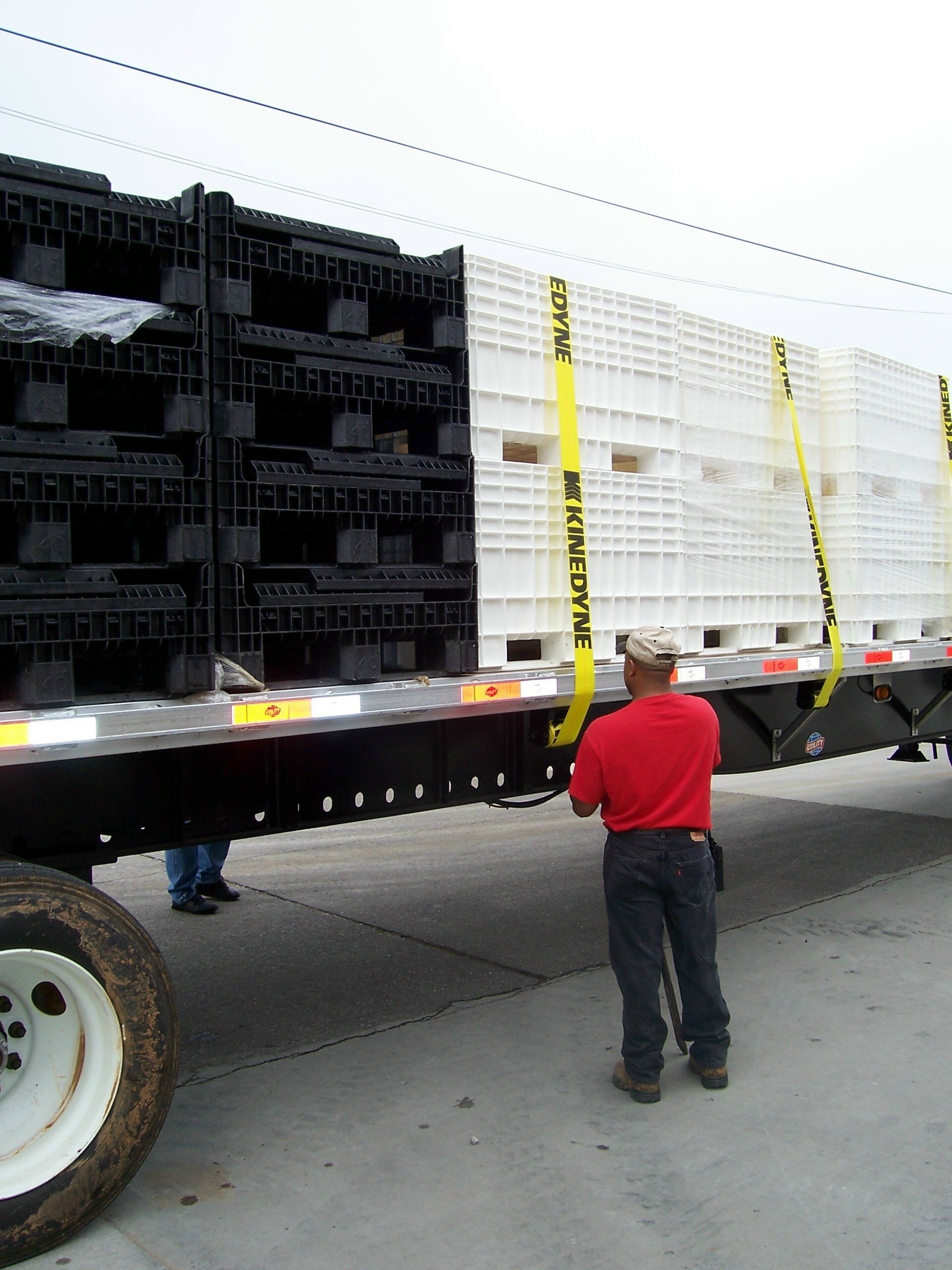Stryker repairers find better way to store, manage parts
DP, DCFA take partnering to new level with purchase of polymer crate
by Miranda Myrick, PAO
An improved material handling process has taken shape in the Directorate of Production's Stryker vehicle branch, and the Directorate of Community and Family Activities played a major role in its development.
Two tractor trailer trucks loaded with new polymer storage crates were delivered by DCFA employees July 18 to the Stryker rebuild operations building in an effort to improve both the production and the recycling processes at Anniston Army Depot.
"If we all have the same mission of supporting our troops, then there's no reason we shouldn't work together on projects such as this," said Thelma McCullough, DCFA deputy director and manager of the depot's recycling center.
The depot and General Dynamics, the Stryker's original equipment manufacturer, have spent many years partnering on the production of new and used vehicles for the military. The difference this time is that their production efforts have been assisted by non-appropriated funding.
With the initial order priced at $36,000, McCullough said the overall cost savings for the depot in one year will equal a ratio of one polymer crate to seven wooden boxes and pallets.
"We want to get out of the wood business," she said, "or at least minimize it."
Wooden storage boxes and pallets have always been used by depot workers on the Stryker production line, said Ruth Anne Bundrum, parts manager. A more sustainable material was needed to prevent the weathering of parts and help better identify parts needed on the assembly line. The new polymer containers-measuring a standard size of 48 inches by 44 inches- have lids that keep moisture out, are easy to transport and store, and will have color-coded labels to help material handlers with the kitting of parts.
"Another reason for the new crates was that the depot and General Dynamics wanted to make it easier to separate the parts into zones according to what parts were needed where on the vehicle," said Bundrum.
Six zones were identified on the Stryker, and workers on the production line will now be able to find needed parts more quickly since the parts will be kitted into their respective zones.
Bundrum and McCullough credited Shelby Kulk, mechanic helper, with the idea of color-coding the identification documents placed on the containers. As a way of protecting the paper, the identifiers are now zip-locked in a weatherproof protector.
"We're hoping this catches on," said McCullough. "We've had some inquiries from other shops that wanted to use the new crates."




Social Sharing